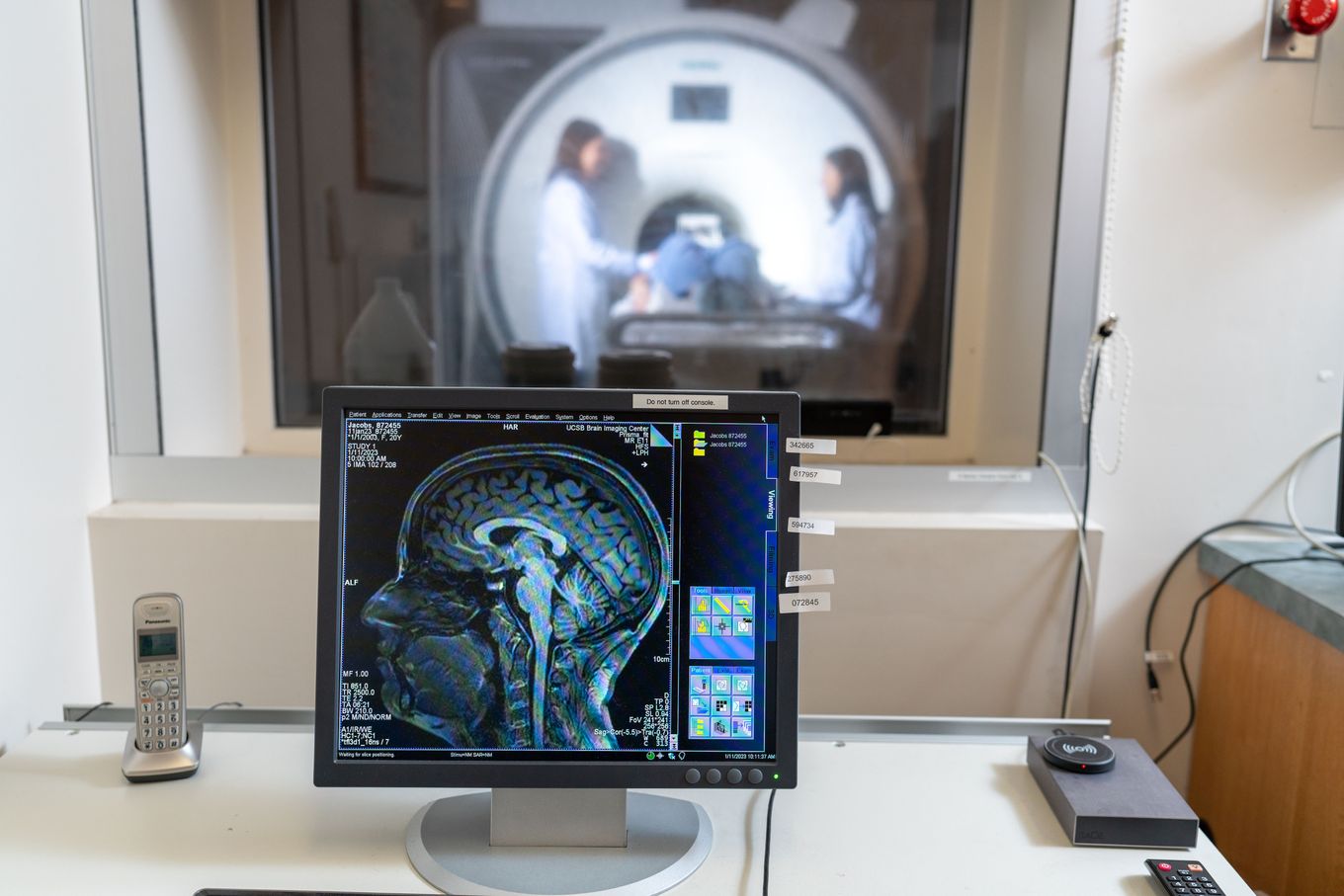The first detailed map of the human brain across gestation has revealed something religion promised but couldn't deliver: a metaphysical, scientific explanation for Motherhood.
Neuroscientists at the University of California Irvine have mapped the neuroanatomical changes from preconception through 2 years postpartum. Scientists took 26 MRI brain scans of a healthy 38-year-old woman to monitor the spectacular surges in hormones during pregnancy. The candidate conceived via in vitro fertilization (IVF).
“The neuroanatomical changes observed over the course of a human pregnancy” is a study which revealed pronounced decreases in gray matter volume and cortical thickness; and an increase in white matter integrity, ventricle volume, and cerebrospinal fluid. Published in “Nature Neuroscience,” the brain studied in the research is that of neuroscientist Elizabeth Chrastil. According to UC Irvine's Center for the Neurobiology of Learning and Memory, “few regions of the human brain are untouched by the transition to motherhood.”
Certainly, we’ve seen MRI snapshots of women’s brains during pregnancy before. However, this study witnessed how soaring hormones affected blood plasma, metabolism, oxygen consumption and immunity each step of the way. Most apparent was a steady decrease in grey matter, the wrinkly outer surface of the brain, throughout pregnancy, and a temporary peak in neural connectivity at the end of the second trimester. These were the most significant trailheads within the brain during gestation, and turning point into motherhood.
While hormones reconfigure the human brain, new mothers emerge with a protective instinct for the child's welfare. The gravitational penchant toward other’s welfare has from time immemorial been called a family: the very foundation of civilization.
In vitro fertilization (IVF) is a process of fertilization where an egg is combined with sperm in vitro ("in glass"). That process involves first monitoring and stimulating a woman's ovulatory process; removing an ovum or ova (egg or eggs) from her ovaries; fertilizing those eggs with sperm in laboratory setting to create a zygote; and transferring by catheter into the uterus the hope of an eukaryotic cell into a successful pregnancy. In 2023, 3.5 million babies were born in the United States. According to the American Society for Reproductive Medicine, roughly 2.5% or 90,000 were the result of IVF.
The first birth of a mammal resulting from IVF occurred in 1959, and the world's first baby conceived via IVF was born in 1978. Robert G. Edwards, the physiologist who co-developed the treatment, was awarded the Nobel Prize in Physiology or Medicine. As medicine advanced, IVF was transformed from natural research into a clinical treatment. Yale Medicine observes:
IVF has been used successfully for over four decades. Over 10 million babies have been born from IVF around the world. Today, there are over 500,000 IVF deliveries every year worldwide.
We welcome 500,000 IVF newborns every year.
However, complications from IVF include: the risk of multiple births; an increased risk of pregnancy loss; obstetrical complications; prematurity; and neonatal morbidity with the potential for long term damage. Financial and emotional stress, and access to care are among the leading concerns for IVF.
Some believe that IVF is morally wrong because it involves the destruction of human embryos, and/or the treatment of embryos as objects. Others question the legal and moral status of early embryos, and the fate of embryos that are not used. However, the central criticism of IVF is that the destruction of embryos, inherent in the IVF process, is the willful and intentional destruction of human life.
The Alabama Supreme Court has issued an opinion: embryos created through IVF should be considered “unborn children.” Thus, the embryos can be considered the subjects of statutory civil suits brought by the prospective parents for wrongful death.
Several of the state’s IVF clinics paused their IVF services as they analyze their liability risks, but the larger discussion has focused on how the decision might affect IVF nationwide. The facts of the case are these.
The plaintiffs, three couples who all underwent IVF treatment at a fertility clinic in Alabama, all became pregnant and gave birth to healthy babies.
In consequence of their IVF treatments, each couple produced additional embryos, a standard procedure in an IVF cycle. Their additional embryos were then frozen by the fertility clinic in trust, enabling the couples to sidestep hormonal treatments and surgeries if and when opting for another IVF cycle in future. The couples’ frozen embryos were cryo-preserved at the fertility clinic located within a hospital.
However, when a patient of that hospital entered the fertility clinic's cryo-preservation unit without authorization; grabbed one of the sub freezing tanks in which the frozen embryos were stored; made contact with the embryos which burnt his hands; he inadvertently dropped the tanks to the floor which destroyed the embryos.
The plaintiffs brought several lawsuits against both fertility clinic and hospital which reached the Supreme Court of Alabama in 2024. In particular, the court was asked to opine upon a statute called,“Wrongful Death of a Minor Act.”
While the Alabama statute was created in 1872, a later clarification to the statutory law included the “unborn child.” The Alabama State statute can only be amended by the Alabama legislature. It has no clear path to the U.S. Supreme Court.
While the Alabama IVF case is a firebrand, it didn’t occur in a vacuum. Today, there are 200+ IVF incidents and legal cases worldwide which affect thousands of people. Mix ups, damages, and the destruction of embryos across the world culminate in a global discussion between church and state.
Alabama Supreme Court Chief Justice Tom Parker repeatedly invoked scripture in his ruling. In the 8-1 majority, Parker wrote that life begins at conception, and therefore frozen embryos are protected under the law:
We believe that each human, being from the moment of conception, is made in the image of God, and created by Him to reflect His likeness. Carving out an exception for the people in this case, small as they were, would be unacceptable to the People of this State.
While IVF continues to advance medical science, incur legal challenge, and establish legal precedent, all faithful, it seems, heretofore agreed they're created by the hand of God, increasingly vary on taking the creative reins into their own hands. Some say the science will estrange man from God. Others report — with a mix of intense joy, relief, euphoria, amazement, and sometimes even disbelief upon seeing and holding their newborn — that the science and miracle of life further curate His omnipotence, wisdom and love.
Archives










